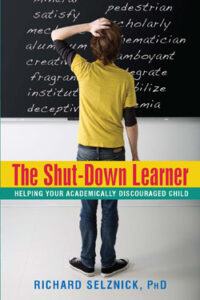“Theories & Hypotheses”
 When you are a parent in struggling “Child Land,” there are all kinds of theories, hypotheses and explanations as to why children do what they do.
When you are a parent in struggling “Child Land,” there are all kinds of theories, hypotheses and explanations as to why children do what they do.
These hypotheses are revealed in statements made as to what is behind the child acting a certain way.
Let’s listen to some recent statements:
“Marla’s so unmotivated. She just wants to do nothing. It must be the medication wearing off.”
“My daughter is refusing to do her work – we thought the Lexipro was working.”
“My son, marches to the beat of his own drummer – he’s more of a creative type. Rules just aren’t his thing.”
And the beat goes on.
Things often not stated:
“I know my kid is manipulating us when he avoids his homework to go play video games.”
“Maybe the school is not the problem as to why she’s acting the way she is.”
“It’s not ok to say whatever you want in the class, even if you don’t like the work.”
“No one wants to invite Zach to their house or a birthday party; he never shares with the other kids and he has alienated them.”
What to do?
One step is to help kids recognize that choices made have built-in (natural) consequences. (“If you don’t share, others will not want to play with you. It’s that simple.”)
If we buffer kids from natural consequences, there will be no reason for them to learn from their mistakes and try a different approach.
Takeaway Point
Double check your hypotheses and theories.
***Please note: Comments are blocked by the hosting site. Please email questions or comments. (See below.)
 Copyright, Richard Selznick, Ph.D. 2022, www.shutdownlearner.com.
Copyright, Richard Selznick, Ph.D. 2022, www.shutdownlearner.com.
To Contact Dr. Richard Selznick for advice, consultation or other information, email rselznick615@gmail.com.
To receive future blog posts, register your email: https://shutdownlearner.com.

 A favorite pastime of mine is watching how parents and their children interact. There’s never a shortage of blog material. For people watching, there’s not much better than cafes and casual restaurants where families tend to congregate.
A favorite pastime of mine is watching how parents and their children interact. There’s never a shortage of blog material. For people watching, there’s not much better than cafes and casual restaurants where families tend to congregate. Parents tell me stories.
Parents tell me stories. 14-year-old Jamie comes in for an assessment. His pediatrician has told the parents that he thinks Jamie has inattentive ADHD.
14-year-old Jamie comes in for an assessment. His pediatrician has told the parents that he thinks Jamie has inattentive ADHD.




